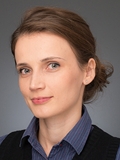OpenGL is the most-used graphics API, as it is available on every modern OS. The problem is that the API is designed in the previous century and therefore doesn't make use of capabilities of modern GPUs. With AMD's Mantle it became clear how such next-gen would look like - especially in complex scenes the speedup can be over 40%. With the donation of Mantle IP to Khronos, VULKAN was born.
We're going to discuss the ins and outs of VULKAN and how it is different from OpenGL and what makes VULKAN so much modern. When possible we show code-example. As OpenGL will be supported for the coming years, we're also answering when to choose for which API and why.
Skills
Experienced programmer, preferably basic knowledge of OpenGL.
Lernziele
Explain how VULKAN works from the perspective of OpenGL. Show the strengths and weaknesses of this new API.
// Referenten
//
 Anca Hamuraru
Anca Hamuraru
With extensive image processing experience and a broad background in CUDA and OpenCL optimisation, Anca is one of the engineers behind the software used by the Phantom high speed video cameras. Passionate about parallel algorithms and performance, she used to teach programming and algorithm analysis theory at university level. She continues her teaching activity as one of StreamComputing's trainers with focus on OpenCL and other parallel programming technologies.
//
 Vincent Hindriksen
Vincent Hindriksen
is founder and CEO of the Amsterdam based StreamCompuitng BV, a company specialised in performance engineering with a strong focus on GPU-computing. The company is now one of the most well-known GPGPU-companies in Europe and has customers world-wide.
